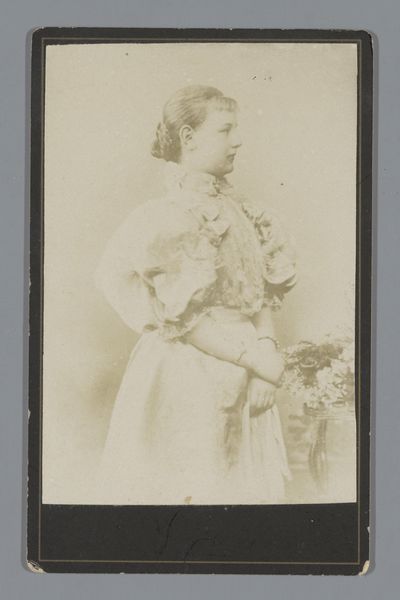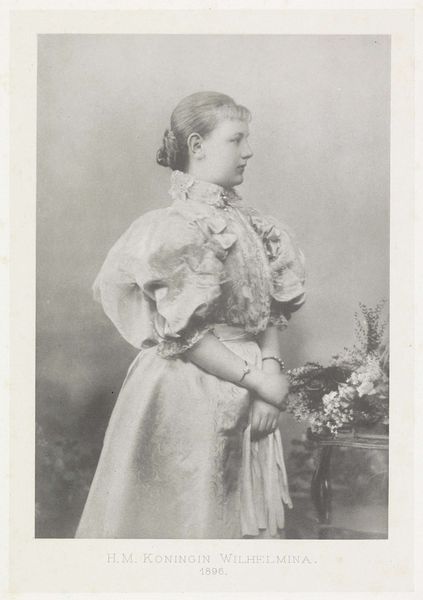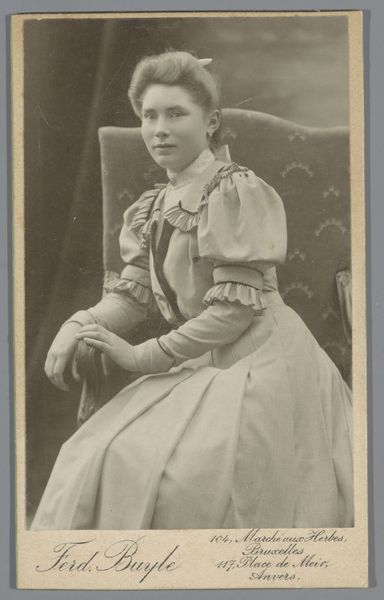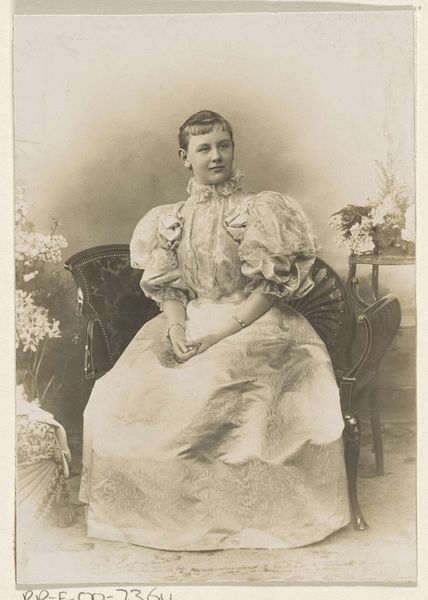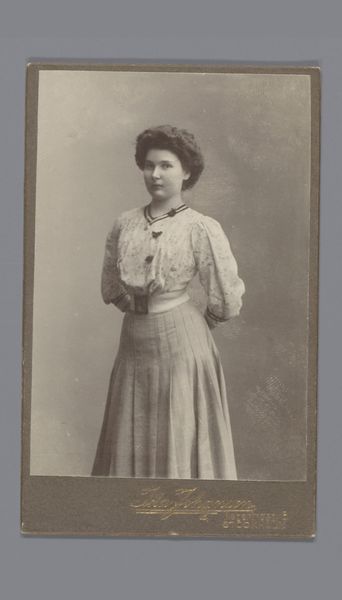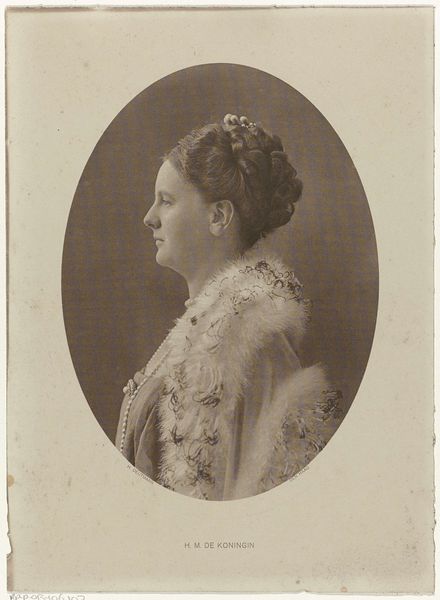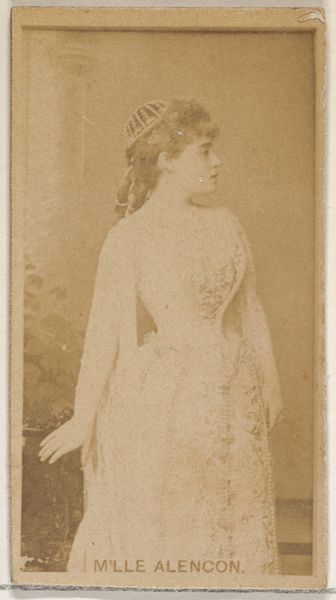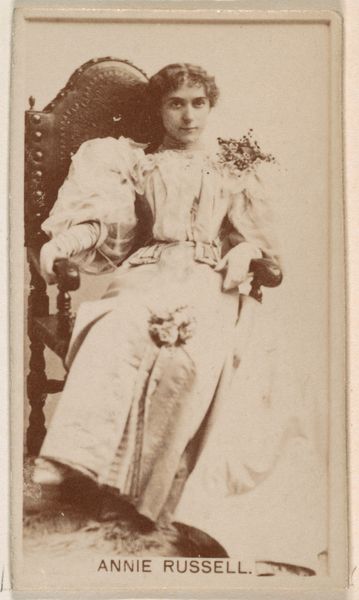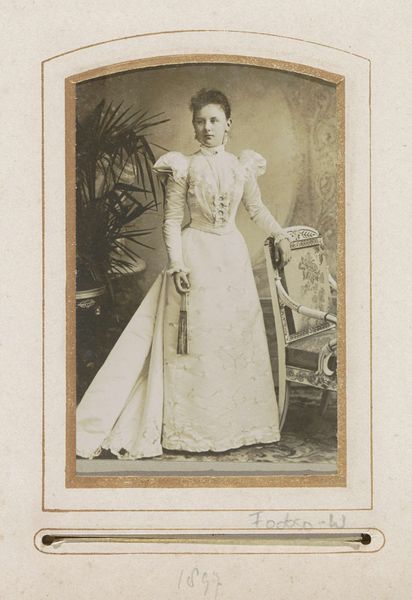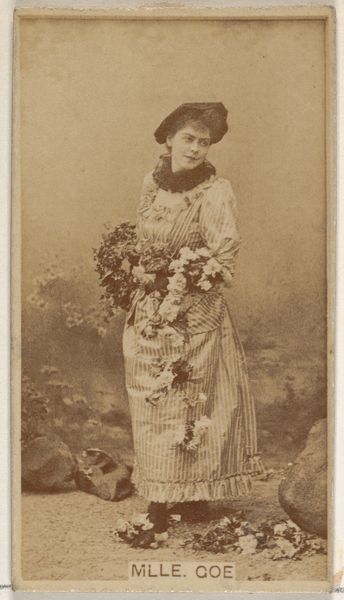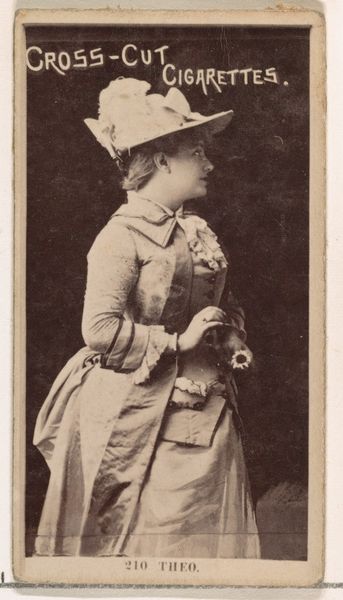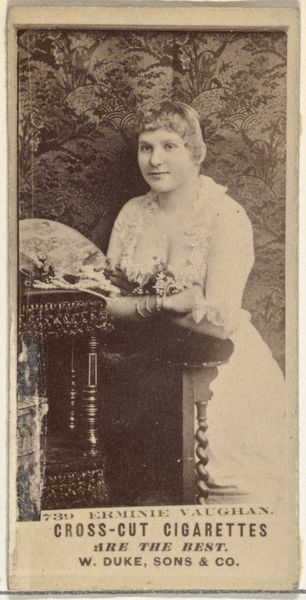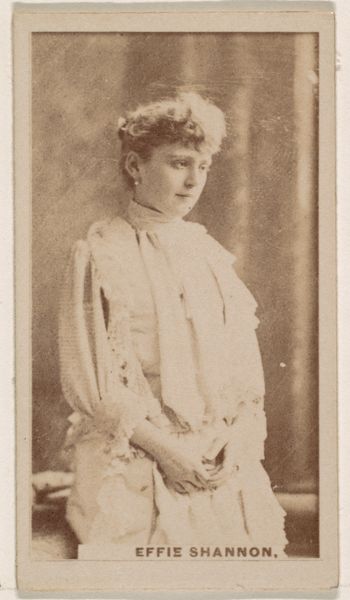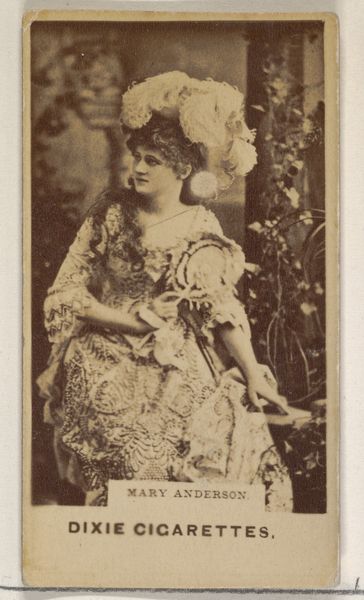
photography, gelatin-silver-print
#
portrait
#
photography
#
gelatin-silver-print
#
realism
Dimensions: height 166 mm, width 108 mm
Copyright: Rijks Museum: Open Domain
Curator: Standing before us is a photograph entitled "Portret van prinses Wilhelmina," potentially created in 1896 by Kameke. The artwork, a gelatin-silver print, resides here at the Rijksmuseum. Editor: Wow, what a perfectly composed photograph! It’s delicate. The light seems to be pouring in all over her frilly gown; she resembles a quiet yet sturdy young tree, perhaps. Curator: Indeed, that sense of sturdy youth feels particularly salient. Consider that Wilhelmina ascended the throne at just 10 years old. Her identity was not merely personal but also intrinsically bound to the very concept of the Dutch nation at a time of rapid social and political transformation. The photographer was aware of the significance of the subject and that the portrait was meant for circulation, so it would become embedded in public memory and consciousness. Editor: Her gaze projects certainty despite her youth, doesn’t it? The light falls perfectly upon her face—her hands clasped so tightly together make you wonder, though, if the perceived certainty wasn't all that… well, certain. There’s such loneliness that emanates here—like being an actual princess isn't always easy-peasy-lemon-squeezy. Curator: Well, her tightly clasped hands may very well symbolize that, even the act of portrayal carries performative labor. This wasn't a casual snapshot but a deliberate construction of identity intertwined with monarchy, nationhood, and burgeoning mass media. Looking at photographs, what stories do the gazes of people convey, and under what historical conditions was it possible to make and circulate portrait photography of the Dutch royal family? The photograph itself also carries the branding of Kameke—a court painter, suggesting how she viewed herself as part of a continuum of artistic creators, helping construct the Dutch court, its rituals and appearance for the general public. Editor: Definitely! In retrospect, thinking about our perspectives as being part of her legacy now makes her youth appear like it was yesterday! Funny that she stares firmly into an imagined, perhaps glorious future, as do we from our standpoint in history, staring directly at her as this artwork takes part in ours. I suppose her photograph has certainly entered the collective imaginary! Curator: It provides an anchor, a face from a bygone era for our current contemplations. We may think about history not as something static or completed, but ongoing—with each encounter creating ripples across time. Editor: Totally. Thanks for all the insights! Now it's time for a nice slice of *appeltaart* for me. See ya!
Comments
No comments
Be the first to comment and join the conversation on the ultimate creative platform.
